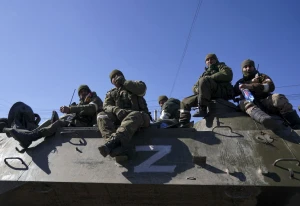
Kursk operation: how to put pressure on Austria from Sudzha
I will write a little bit about the Kursk operation from my point of view. So, can it have short-term and long-term economic aspects? Yes, it can. And even diplomatic ones
I'll start with the simplest point.
The diplomatic aspect. Ukraine has captured the Sudzha measuring station, which is responsible for pumping gas to Europe through Ukraine. Now we control it.
“And here’s where the situation gets interesting: the station is located in a conflict zone and could be accidentally, or "accidentally," destroyed or damaged.”
The station benefits three parties, but who are they? The first is Ukraine. We earn money from the gas transit, which is a significant amount given the war economy. The second is Russia, which receives money for its exports and, importantly, a loophole in the sanctions to continue receiving that money. It's unclear which of these points is more crucial for them. In any case, we could stop the transit, but it’s not just about the transit fees; it’s also about obligations to our European partners.
And this is where it gets really interesting. Who are these partners? They happen to be the most pro-Russian countries in the EU—Austria and Hungary. As the European Commission and Parliament say, "to negotiate with Hungary, you have to put pressure on Austria." Austria is our most dangerous "friend" and also a friend of Russia. They quietly sit back and successfully manipulate Hungary.
So, Hungary and Austria are the main beneficiaries of the gas from this pipeline. If something happens to the pipeline, they will be the hardest hit. They won’t collapse, of course, but the impact on them would be significant.
“Since the station, which should be under Gazprom's control, is no longer controlled by them, the situation is very precarious. This gives us an opportunity to put a bit more (or perhaps a lot more) pressure on these two countries. My European friends have said that if we don't take advantage of this situation—by negotiating gas in exchange for not blocking any assistance to Ukraine—we'd be foolish. I hope we can succeed.”
Next, and most importantly, the Kursk nuclear power plant. This is a very interesting situation, and it could become pivotal. What's more, we don't even need to capture it; we just need to bring it under fire control. The key is to be within a range that allows us to destroy the substations distributing its energy with precision weapons. In my view, we don’t need to actually destroy them; we just need the capability to do so in response to any attacks on our energy infrastructure.
Now, let's consider the significance of the Kursk nuclear power plant. It supplies an irreplaceable 80 to 90% of the electricity in the Kursk region. This means that losing the ability to provide power there would lead to a collapse—not just an energy collapse, but a total breakdown.
“The Kursk nuclear power plant provides 49% of the energy for the Central Black Earth Economic Region, which includes Belgorod, Voronezh, Kursk, Lipetsk, and Tambov regions. This area is home to 7 million people, estimated to be over 4% of Russia's population. Considering that census data and population estimates often overlook migration from depressed regions to the south, the actual figure could be as high as 5%, or even 6%. Losing 49% of the energy supply would have the same impact as losing half of our own energy capacity. Additionally, neighboring regions would face an energy crisis. What's particularly interesting is that this energy supports stationary systems for electronic warfare, reconnaissance, and air defense.”
What’s also interesting is that there are strategic enterprises directly powered by the Kursk nuclear power plant. This brings us to the concept of the Kursk Magnetic Anomaly, within which lies a significant number of mining and processing plants that play a crucial role in the economy, especially under the current sanctions. The impact here could be twofold. On one hand, these are strategic enterprises, and some, like the Oskol Electrometallurgical Plant or the Novolipetsk Steel Plant (the largest in Russia and the 17th largest in the world), are key. A strike here would hit Russia's industry hard but would also impact a whole group of oligarchs.
That’s just the first part of the story. The second part is that the Central Black Earth region hosts a large share of Russia’s agriculture, along with food processing and production centers. The region also has a highly developed livestock industry, including poultry and various other animals (not to be confused with citizens). Without electricity, this sector would face complete collapse.
The third part of the story is the social tension that could arise from a power outage in a region with a population density of 30-50 people per square kilometer, where 60% of the population lives in cities. Fire control within a 100-120 km radius could make life very uncomfortable for 0.8 to 1.1 million people.
What’s quietly starting to be discussed is that no one wants to help the defeated. There are indications that the entire axis of support for Russia—from Hungary and China to Iran and other Middle Eastern tyrannies—has started to waver. However, the results of this shift will only become apparent by spring.
From a geopolitical and global strategy perspective, this operation is brilliant. From a planning standpoint, it looks very promising. However, we haven’t yet received the final bill for it, and the cost could be high—from significant losses to a potential strike with tactical nuclear weapons. So, while we celebrate our successes, we must remember the price we’re paying and will still have to pay.
About the author. Denys Dovhopolyi, leader of the tech entrepreneur community in Ukraine, co-founder of the GrowthUP incubator.
The editors don't always share the opinions expressed by the authors of the blogs.
- News












































